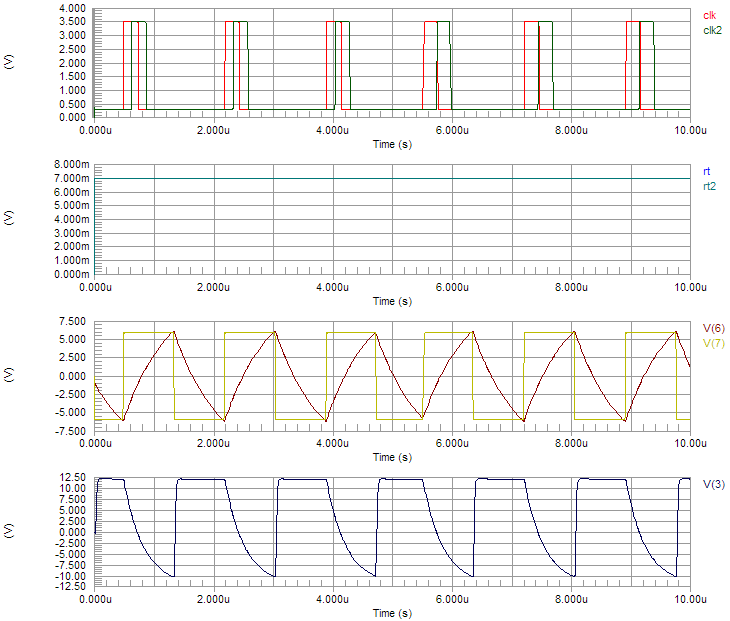Other Parts Discussed in Thread: TINA-TI,
Tool/software: TINA-TI or Spice Models
The model that is provided for this device, http://www.ti.com/lit/zip/snvm865 appears to have gross errors that preclude its usefulness as a general purpose simulation model.
It would take far more time than I can afford, to fully enumerate all the details of this model. That said, any single one of these is enough to illustrate a failing of the model, if not a fatal error.
1. There are no disclaimers or approximations noted in the header of the file. Clearly, this model will have significant limitations. How is the end user supposed to know what those are?
2. The COMP and COMP2 pins are driven by E sources with zero output resistance. This violates the datasheet COMP VOH and COMP VOL parameters, and prevents simulation of ganged operation (singular matrix). Furthermore, there is no disable function on this pin, which apparently is triggered by setting FB(n) = VCC(n).
3. SS and SS2 are driven by a G source (10 or 1 microampere) and no clamping voltage. I cannot see another load for these nets that would act to limit their voltage. The datasheet gives an absolute maximum of 7V, which will be exceeded quickly (hundreds of milliseconds) with a typical SS capacitor, 1uA charge current, and no limiting voltage. The only other connection to these nets, a _S5_mod switch, specifies 1mohm on resistance, a clearly bogus figure.
4. VIN current appears to be zero, i.e., I_BIAS is not modeled at all. This violates four lines on the datasheet, and makes it impossible to simulate device power dissipation.
5. RT appears to be driven by a current and nothing else (IS1#CLK_GEN), which violates the datasheet (RT output voltage typ 1.25V at RT = 25k).
These mistakes are fundamental to the model itself, part of SPICE syntax, independent of simulator.
While I am not using PSPICE to investigate this model, I am also not expecting (or complaining about) the model not working in my particular simulator.
If you could provide a netlist of a working PSPICE test simulation, using this model, that would be helpful.
Thank you,
Tim



